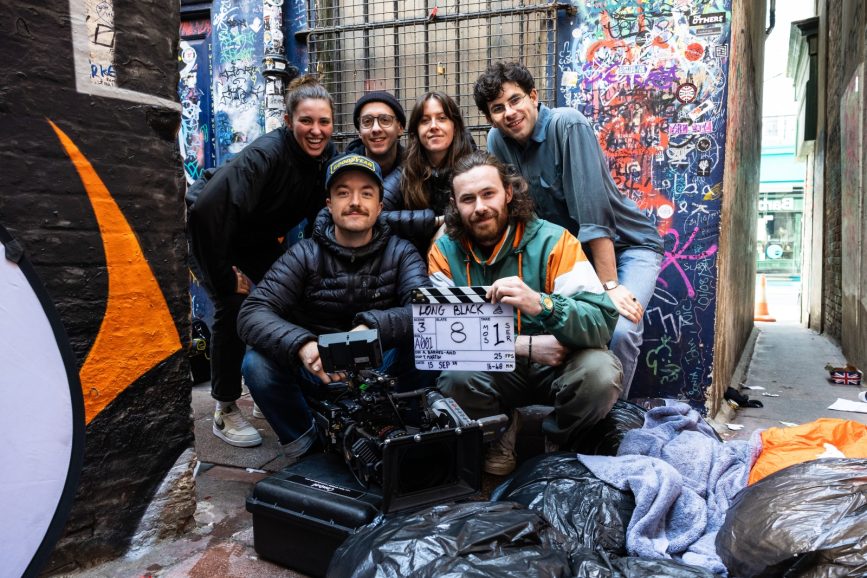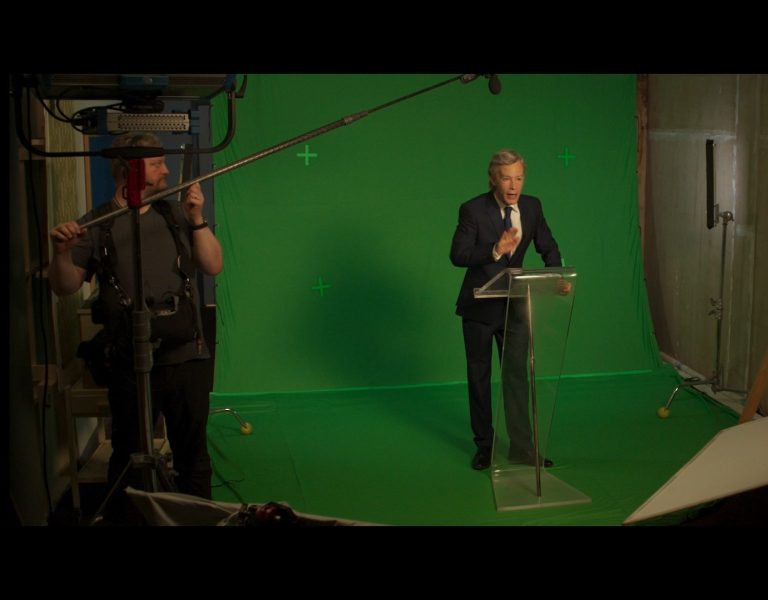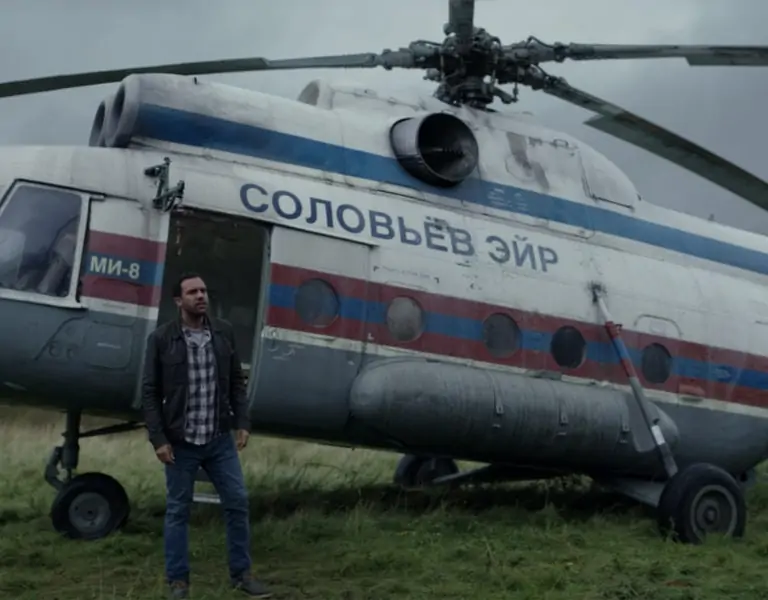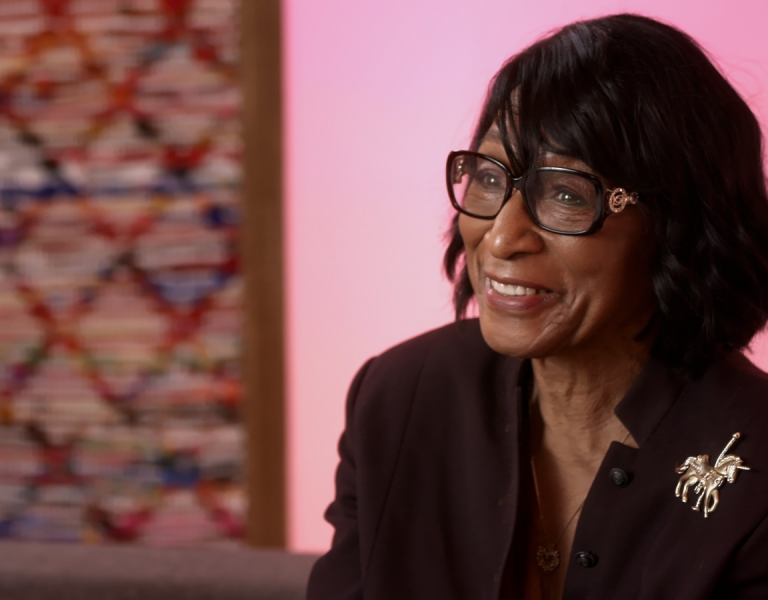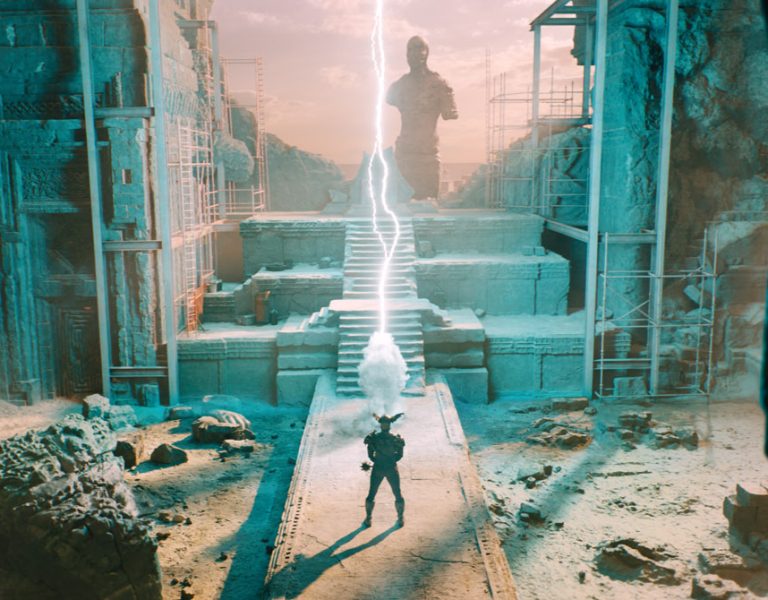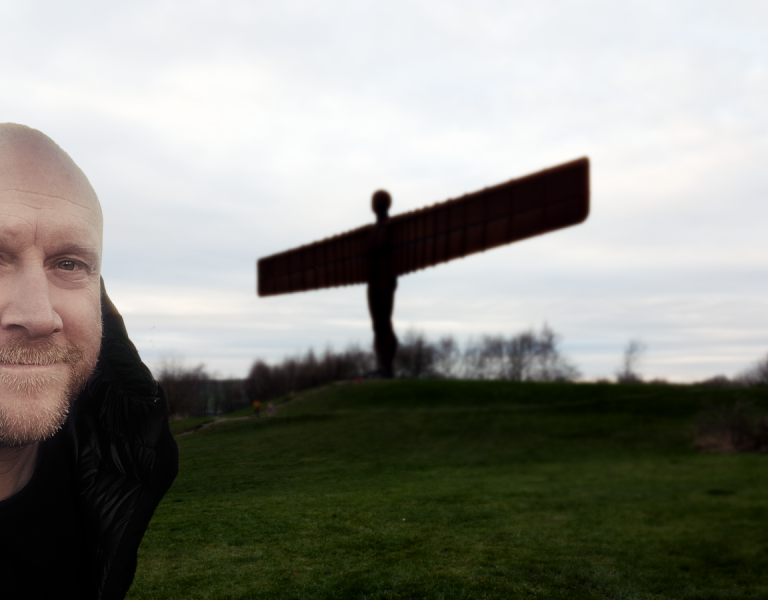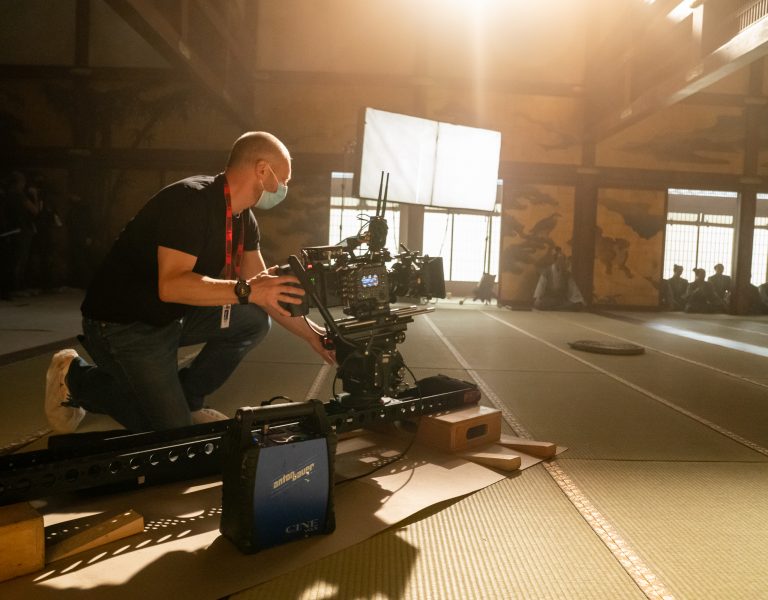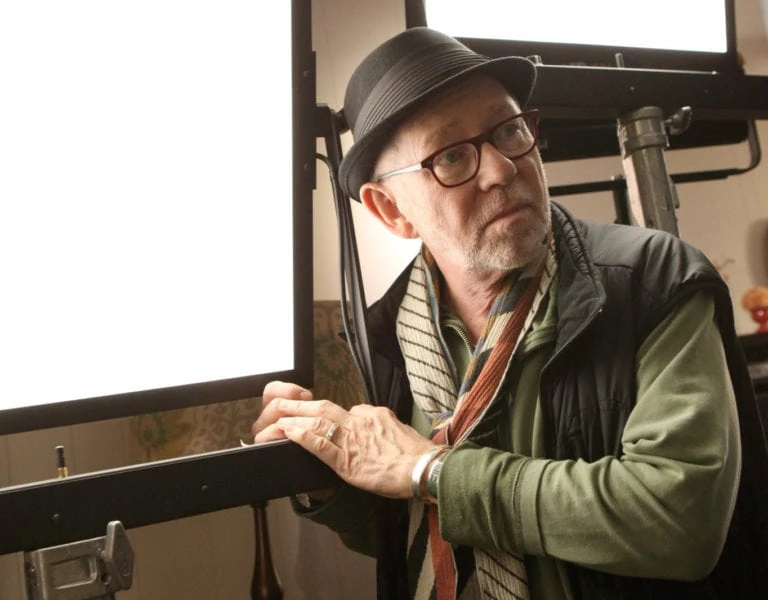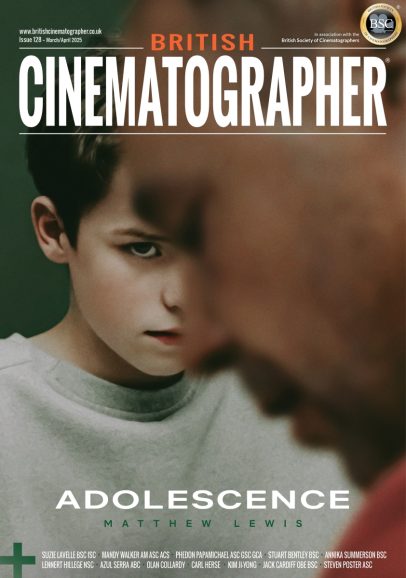CUSTOMERS ONLY
Director Alex Barnes-Auld and Toby Martin shed light on how they filmed Long Black, a short comedy that sees a man on the verge of wetting himself begging a pretentious barista to use his bathroom.
How did you guys meet?
Toby Martin: Yeah it’s kind of like the film, a very funny story. I was shooting another project shot down in Brighton. Alex was down there at the time, I just reached out two days before shooting and thought “we should probably have an AD on this.” So, I reached out and Alex swooped in and met me in a coffee shop – you can see where this is going – and this shop was rather swanky and typically, didn’t have a toilet. Alex popped his head in and was like “Hi really nice to meet you. I’ll see you in 20 minutes!” and disappeared off to go find a toilet and luckily didn’t end up in an alleyway.
Alex Barnes-Auld: What Toby hadn’t seen was that I’d been to like five or six other cafes on the way and none had toilets, so I was like “I’m actually going to wee myself in this meeting!”. The story kind of came about from that. I did run into a nice café which let me pee, but I was left wondering what would happen if you did run in to the worst kind of person who would waste your time and make the situation worse. And I was thinking “what would I do?” in an extreme version of reality, which led to Long Black.
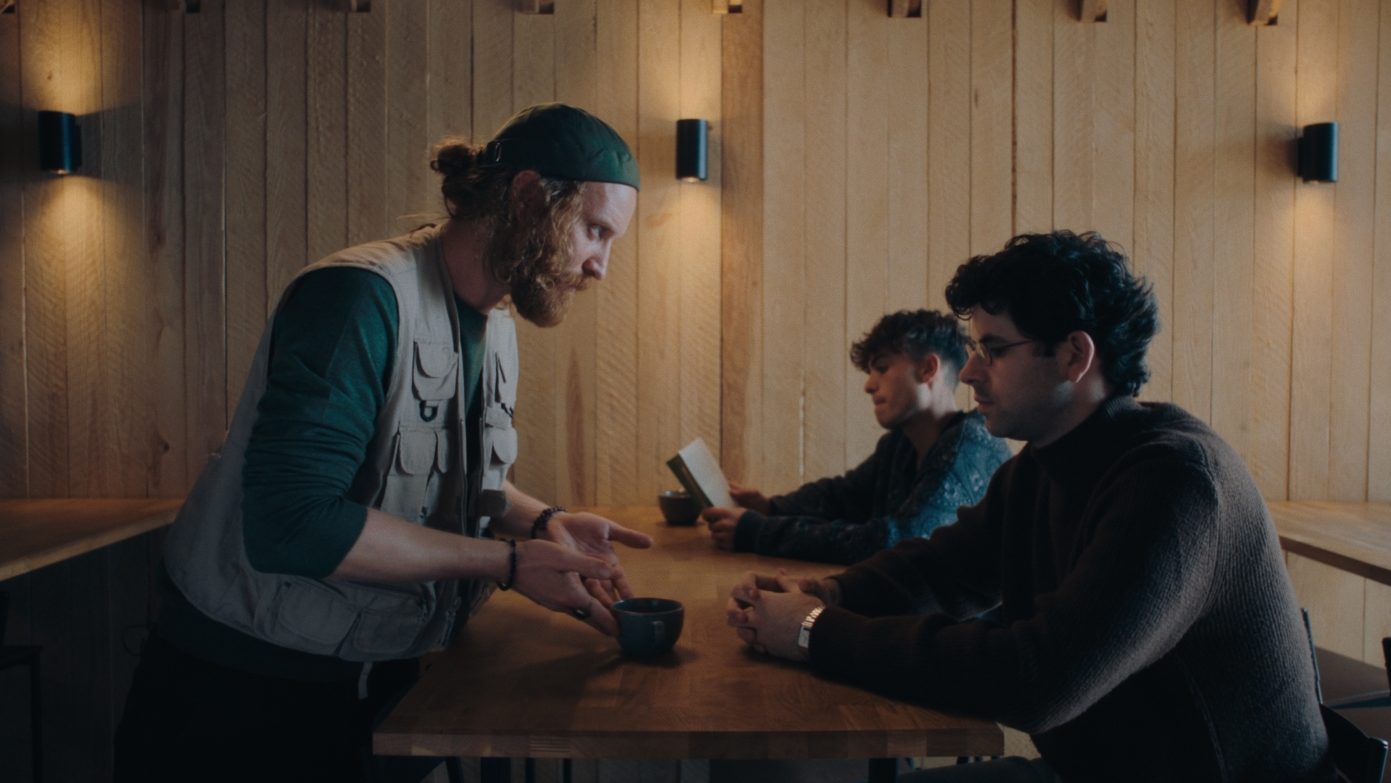
Where did you draw the line on how long and excruciating you would make the opening scene without it feeling overblown?
T: Yeah, it wasn’t drastically longer, and I don’t think we edited any of the original script. It’s funny because you’re making something so adverse to real life, but it needs to feel grounded in reality, like someone could actually be waiting there that long. Like when you’re younger and you’ll be watching James Bond or something, and when Bond goes underwater you try hold your breath with him just to see if it’s possible.
A: It ended up being about 3 and a half minutes. Which in my mind, if I was desperate for a wee, would be a long old time!
What visual inspirations did you draw upon?
A: Initially we wanted to go with something Edgar Wright-y in style. But out of limitation, we literally had to pull in every favour possible to get this off the ground, we had one 14 hour day to shoot it, so we did our best to emulate.
T: Visually we were really sensible about it. We knew where we wanted to go, and Alex had a really clear vision. My background is mostly in commercials and a lot of the references Alex had picked were commercially inspired. We knew we were up against it as it was such a small scale short. Originally, we had a location which was all white walls and a skylight that we’d need to black out, and not really any windows and we thought okay we can do this. But not long before shooting, that location fell through and Alex was heartbroken. But we got the mentality that this was just going to force us to find somewhere better. When we found the final location, we were delighted as it was leaning strongly into some of the visuals Alex had imagined. It was very warm and could easily be adapted into a hipster coffee spot, with natural wooden walls for light to bounce off and nice blue light coming in. The location leant into some really lovely colour contrast.
A: We leant into that even more with some of the costume choices as well. In the first half, the lead (Tom Rainn) sticks out like a sore thumb because he’s in all these pale blues which was intentional so the barista’s (Maxwell James Clements) earthy colours fit more naturally into the space.
Some of that Edgar Wright sensibility definitely seeps through, even on a shoestring budget.
T: Yeah definitely, I think we had such an amazing original score that just took the film to another level. It’s so important with comedy to hit all those beats and points in the music. I’d seen it before with placeholder music and it’s just a different beast with the actual score.
A: We were really trying to toe the line about how “Mickey Mouse” we wanted to go. It was very much a collaboration so the composer (George Bloomfield) would put beats on everything and I would go through it with him and remove the ones we didn’t feel were right and keep the best ones. That’s how we got the nice balance between serious and grounded in reality, but still very tongue-in-cheek.
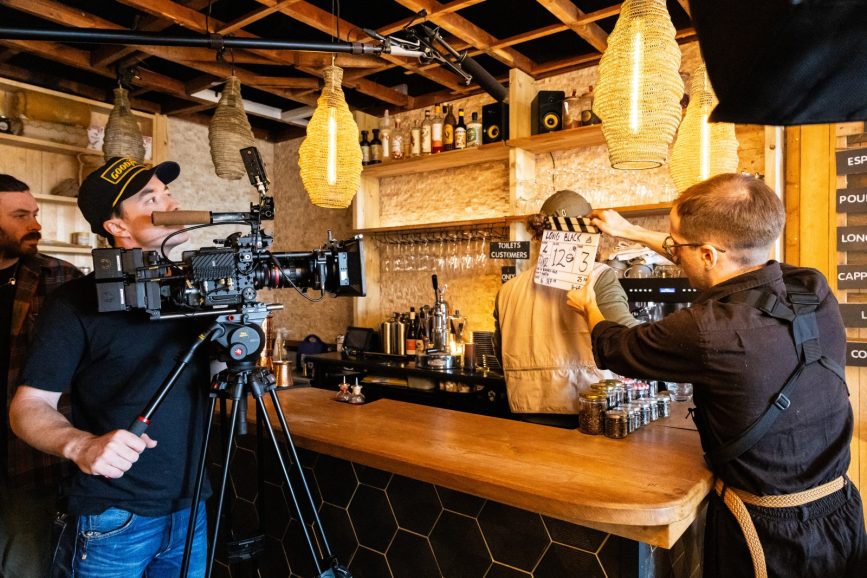
What’s the key to great comedy?
A: I think it really comes down to timing. Timing between the edits, the performances and the music. Our leads had great chemistry, we did a couple of rehearsals, but they had such amazing ideas to bounce off of each other about their characters. We got the timing down really well and did a couple of run throughs with the camera and I feel all those marriages came together perfectly. When I started cutting it, I was like “how the hell do I make this funny?!” but getting all the pieces together, matched with Toby’s beautiful cinematography, resulted in exactly what I was looking for, visually and performance wise.
T: In preproduction we really talked about how to extract the funny out of this. It’s really hard to go out there and say: “we’re going to make something really funny” and then get away with it. One of the things we talked about a lot and really surprised us was on the day, how bold we were in agreeing not to lean into traditional coverage so much. There were moments when we wanted to land on different angles and different beats, but we both felt that in terms of pacing, we sacrificed some shots so we could give the actors space and run a scene from top to bottom. Having two masters top to bottom, we could then find the comedy in the edit as well, just so squeeze every bit of funny out of it. Shorts are always odd, because you look back on them with such retrospect and see them with rose-tinted glasses and you forget all the limitations you faced on the day, but actually I don’t think I’d change anything about the way we shot it given the limitations we had. We really wanted to give the actors their space, especially given the phenomenal level of talent.
What benefit does your commercial background have?
T: Well normally you’re obviously in and out in a day. You’re so used to finessing things to such a small degree because there are 15 clients in a room who want everything to be perfect. You find all these quick shortcuts, that you probably get to when shooting features too, but commercials seem to really expedite these learning experiences.
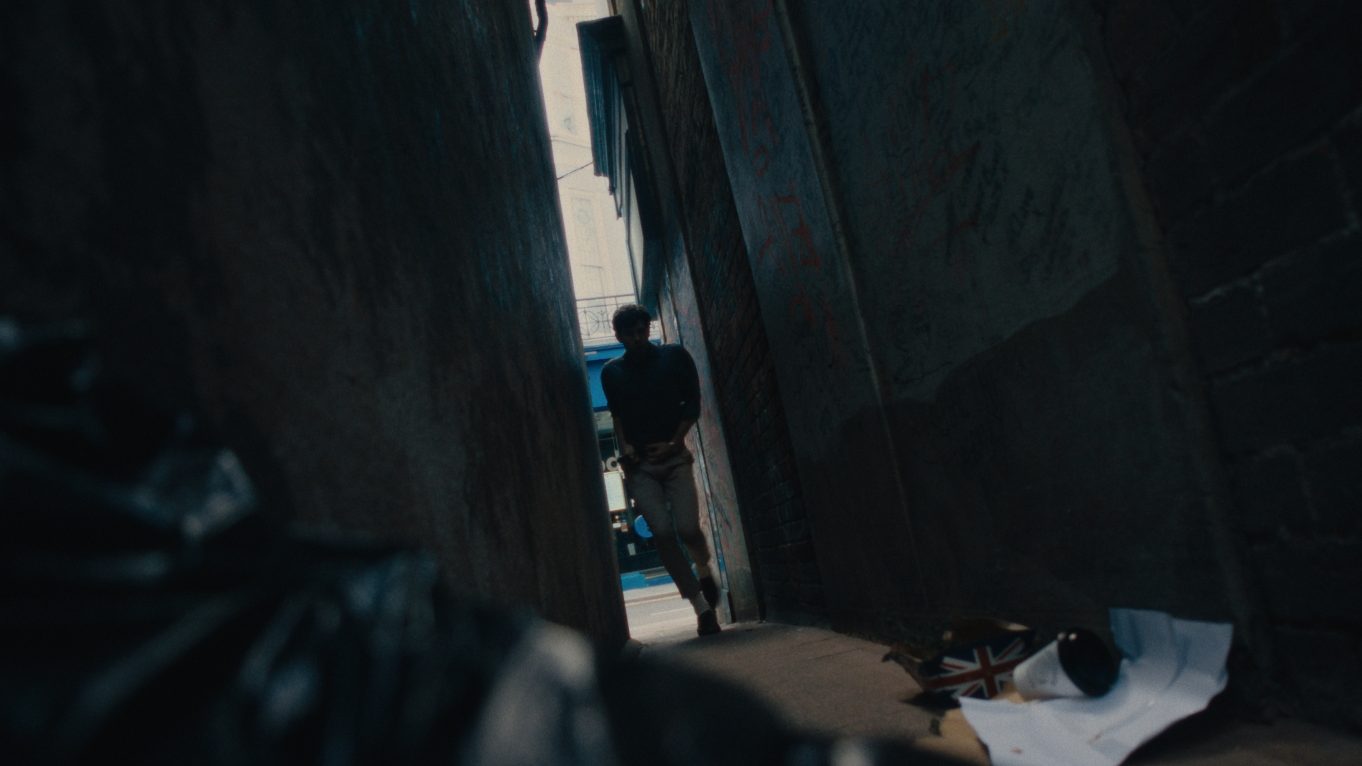
What gear did you use to film Long Black?
T: We knew we needed to move quickly so we shot on an ALEXA Mini which was Super 35. We leant into zooms, using some old Angenieux DP Optimos as they’re a bit softer and less filtration. Alex was completely across the grade as he’s a very experienced colourist in his own right so I let him run with it a bit more than I normally would! It was a very simple camera package, we had a director’s monitor and a focus puller’s monitor and that was pretty much it. It wasn’t clunky and we purposefully made that decision.
A: We wanted to shoot Super 35 because I personally prefer the look to full frame. Full frame feels very big in the commercial space right now and we didn’t want this to be super crisp or super sharp or getting that full frame ultra-wide look. We wanted to lean into a cosier vibe and softer colour palette which the Optimos were great for. It was also so much quicker, there was one moment where Toby lined up a shot I wasn’t sure about, so he just yoinked and racked it in and we were like “perfect!”
T: There’s more to it I promise!
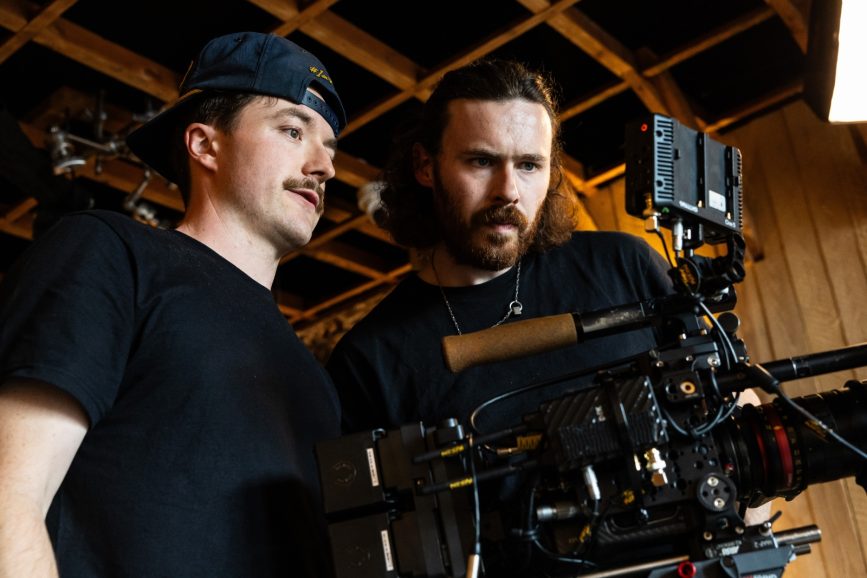
What was your favourite shot or sequence?
A: I have two..
T: Go on Alex.
A: Obviously, the pissing scene! We spent two days before running around Brighton trying to figure out how we are practically going to do this.
T: Yeah we found ourselves in pet shops and all sorts.
A: It ended up being a Fairy Liquid bottle attached with epoxy to a fishtank feeding tube and we cut a hole in Tom’s pocket and wired it through. I was camera operating and Toby was doing the bottle squeezing!
T: I think it was two litres of water on every take and Tom was such a good sport for lying on the floor in this Quadrophenia looking alley for three or so takes.
A: The other favourite shot was one we found on the day, which was the trousers down, camera through the legs shot. We discussed whether to show the detail of that scene, but after chatting we came up with this instead and it was perfect.
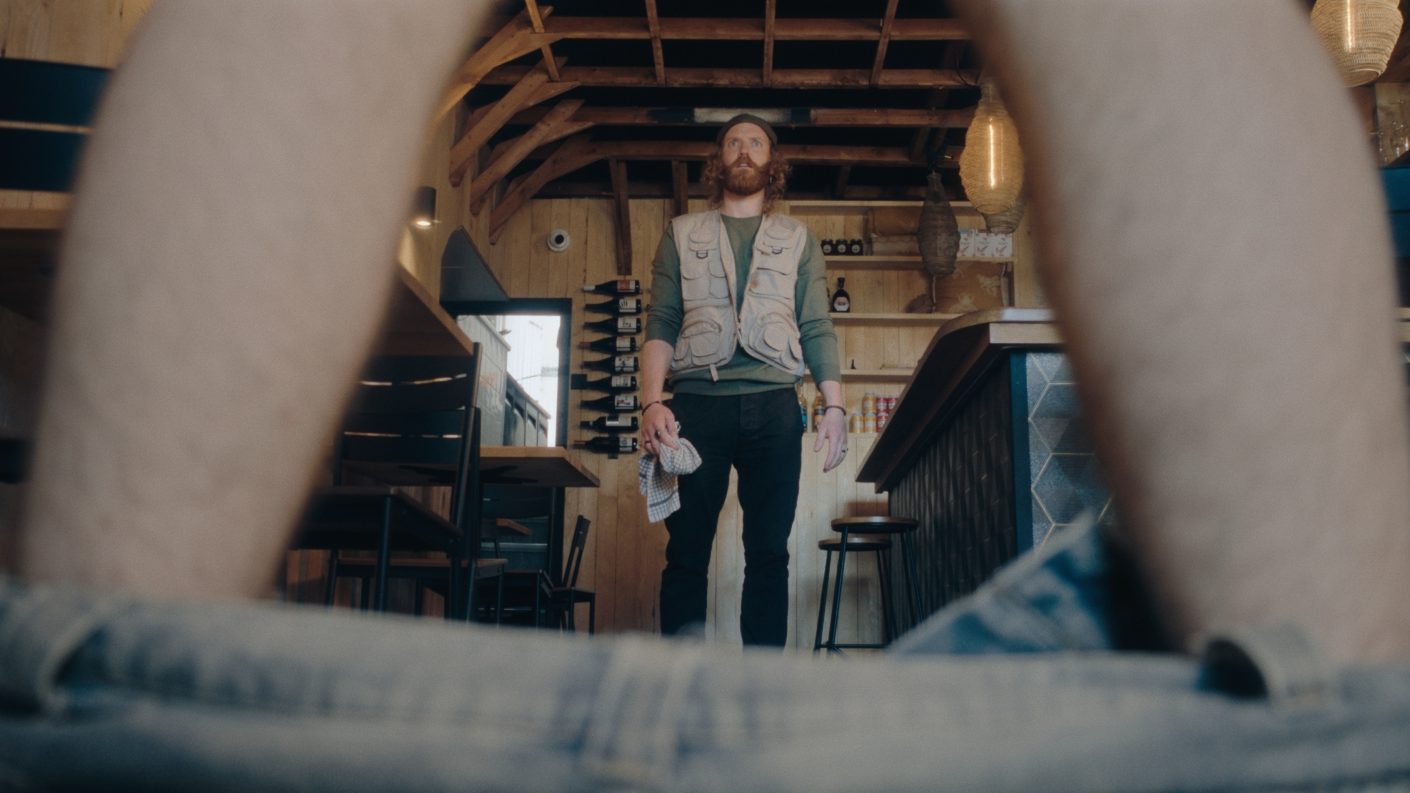
T: Yeah, I also loved the sequence, the only sequence really, where we introduce camera movement. The camera goes over the coffee cups and upwards with Tom’s character standing up. I remember knowing we’d nailed it, and it was one of them where we telling as much of the story in as little time as possible and that’s a nice way to think about this film in general.
A: It was a great example of how we collaborated. When I storyboarded this scene, it was three shots but when I met up with Toby he came up with this great idea to economise it and it ended up being such a fabulous collaboration. So much of the story is condensed in to one shot. Ultimately, we wanted to make something really fun, and something that didn’t waste anyone’s time!
